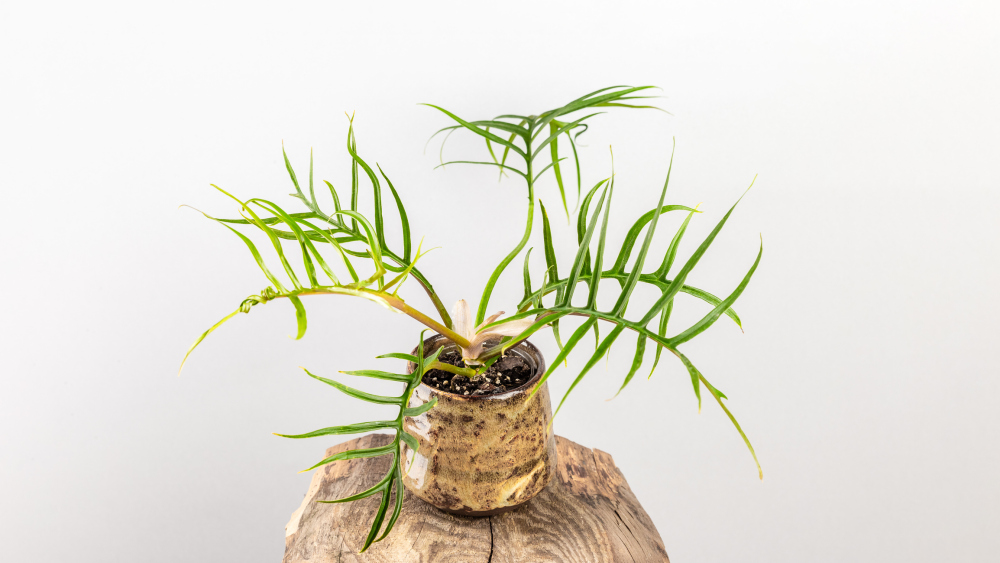
Philodendron tortum is a rare and striking aroid beloved for its deeply lobed, skeleton-like leaves that resemble palm fronds or twisted fingers. Native to the tropical rainforests of Brazil, this philodendron is an epiphytic climber that offers a completely different aesthetic from the broader, heart-shaped foliage typical of the genus.
Its delicate, architectural look makes it a standout in any plant collection, and despite its exotic appearance, Philodendron tortum is surprisingly easy to care for with the right conditions.
Philodendron tortum prefers bright, indirect light. A few hours of gentle morning sun from an east-facing window is ideal, but avoid strong afternoon rays, which can scorch its thin, intricate leaves.
In lower light, it may grow more slowly or become leggy, but it generally tolerates moderate lighting conditions. If using grow lights, aim for 12–14 hours of light daily to maintain healthy, consistent growth.
Water your Philodendron Tortum when the top 1–2 inches of soil are dry. Like most philodendrons, tortum enjoys evenly moist soil but cannot tolerate sogginess. Overwatering is the most common cause of decline, so ensure the pot has proper drainage.
In the active growing season (spring and summer), you may need to water every 7–10 days. In fall and winter, reduce watering frequency as growth slows.
As a rainforest native, Philodendron tortum thrives in high humidity—aim for at least 60%, though 70% or higher is even better. This helps support vigorous growth and prevents crisping of the narrow leaf edges.
Temperature-wise, keep it in a warm space between 65–85°F (18–29°C). Avoid cold drafts and never expose the plant to temperatures below 55°F (13°C).
Use a light, chunky, and well-draining mix to mimic the plant’s natural growing conditions as an epiphyte. A good mix might include:
Repot your Philodendron Totrum every 1–2 years, or when roots start growing out of the bottom of the pot. Spring is the best time to repot, as the plant enters its active growth phase.
Feed Philodendron tortum every 4–6 weeks during the growing season with a balanced liquid fertilizer diluted to half strength. This will help support new leaf development and overall plant health. Pause fertilization in winter when the plant is less active.
Tortum is a natural climber, and providing a moss pole or support stake will encourage larger, more vigorous growth. Without support, it may trail or become leggy over time.
Encourage it to climb to help it develop more mature foliage and to showcase its unique structure.
This plant doesn’t require much pruning, but you can remove:
Always use clean, sharp scissors or pruning shears. Wipe the leaves gently with a damp cloth to remove dust and keep the plant looking its best.
Philodendron tortum is easily propagated through stem cuttings. Select a healthy section with at least one node and place it in water, sphagnum moss, or a moist soil mix until roots develop.
Propagation is best done during spring or early summer, when the plant is actively growing. High humidity will speed up root formation.
Like most philodendrons, tortum is toxic to pets due to calcium oxalate crystals. Ingestion may cause irritation or discomfort in cats and dogs. Keep it out of reach of curious paws.